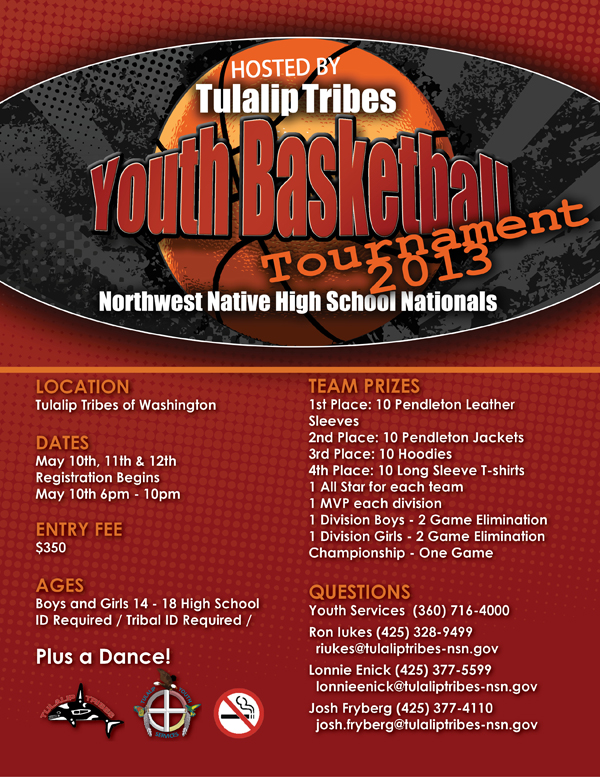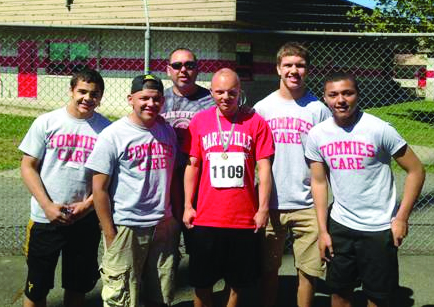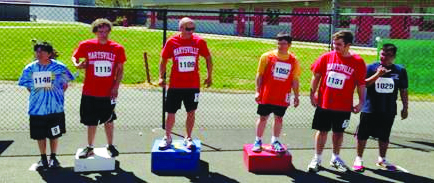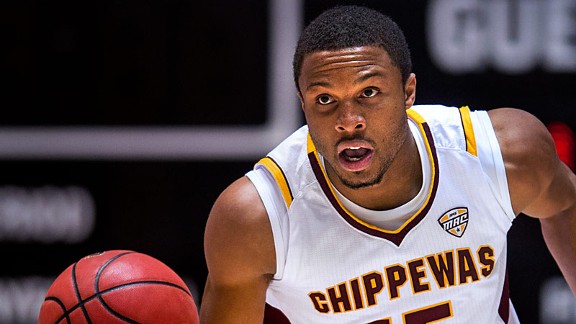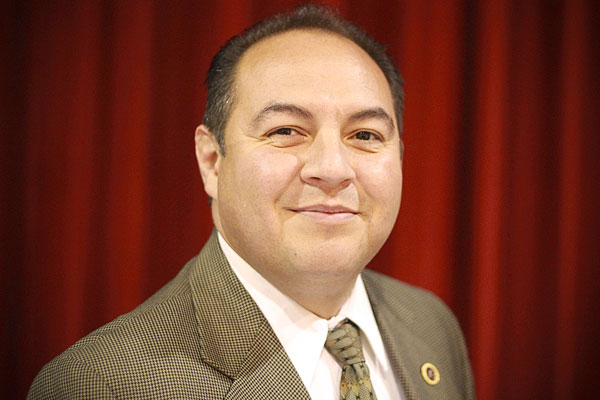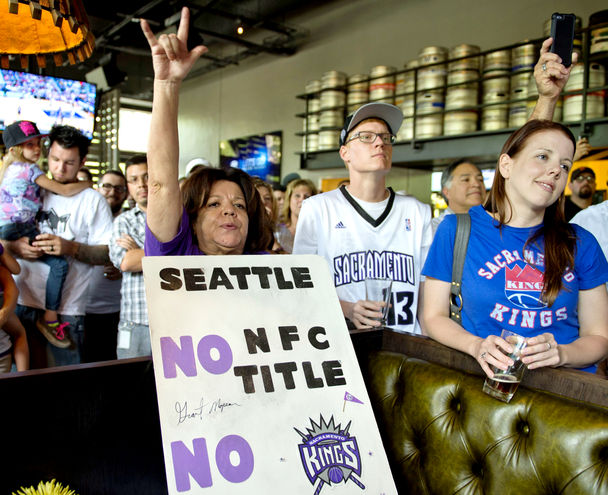Vincent Schilling, Indian Country Today Media Network
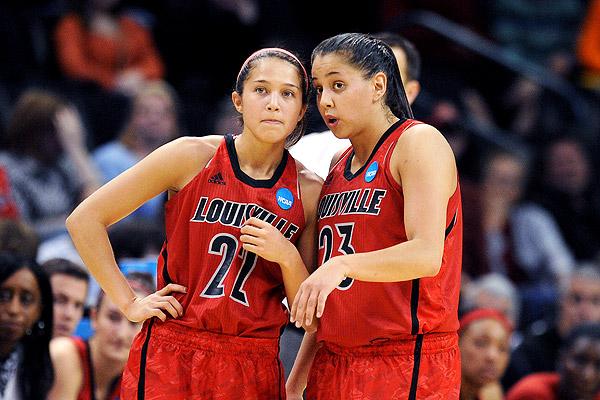
Read more at https://indiancountrytodaymedianetwork.com/2013/06/09/eight-native-basketball-players-you-need-know-better-149785
After the incredible, unprecedented run through the 2013 NCAA Women’s Basketball Tournament that Shoni and Jude Schimmel, Umatilla, led the Louisville Cardinals on, ICTMN reached out to some of the most amazing and historically important Native hoops players to get their thoughts on the state of Native basketball, how to succeed in life and where they’re headed next–including from the Sisters themselves. “Let’s give them somethintg to talk about!,” we promised. And so we kicked off a Conversations With Champions series, sitting down with eight basketball trailblazers, champions and builders for some one-on-ones. Here is a recap of the series, in case you missed any of the engaging discussions. These are men and women you need to know.
ONE: Cliff Johns, the first Native American to play for legendary NCAA coach Lute Olsen at the University of Arizona, shared his thoughts on how to overcome tough circumstances and succeed in life, what the amazing Jim Valvano taught him and how the Schimmels have inspired him and Indian country.

“There were three simple factors about life and basketball that Jimmy Valvano would share with his players and basketball campers. One: Your family. Jimmy would talk about family and how important they are. They are your support system and number one throughout the whole process. You have to love and respect your family and listen to them.
Two: The love for the sport. The passion, the dedication, the blood sweat and tears and how much time you put into it into learning the fundamentals is the second most important part.
Three: Your spirituality. You have to have some sort of spiritual roots and spiritual identity going through this process.
You have to keep these three concepts in mind to be successful in life and successful on the basketball court. I have always kept this in my mind. In paralleling this with the Schimmel sisters, they have all of these qualities. It is obvious through their parents and the support and love that they have. They also have that cultural aspect, which drew a lot of attention.”
For more, read “Hoops Pioneer Cliff Johns Talks About Schimmels, Valvano and Life“
TWO: In catching up with Kenny Dobbs, the all-universe dunking star, he discussed the great accomplishments of Native Americans on the hardwood in 2013 and about his own life choices that have led to his success and which drive him to help American Indian youth.

“Part of the testimony that I share with kids when I go out and do tours and speaking engagements is figuring out what your dream is and what your goal is in life. Whether you believe in God or not, we have a greater purpose instead of just partying it up. There is something that each one of us has a destiny to fulfill. We have all been given a talent to be used for that purpose.
You have to figure out that talent. Maybe you’re not a basketball player or dunker – maybe you write poetry, or sing or make beats, or you are a doctor. Whatever it is, if you have different dreams and talents, the main message is to focus on those things and put energy into it now instead of later on.
I was given a second chance at life. I capitalized on that opportunity. I tell kids, ‘either change your life right now hearing my story and watching these cool dunks’ or later you might remember this message and change your life out of desperation. Make these changes because of inspiration, as opposed to being back against the wall and make the changes out of desperation.”
For more, read “Catching Up With Slam-Dunking Legend Kenny Dobbs“
THREE: University of Kansas star guard Angel Goodrich sat down with ICTMN soon after being drafted into the WNBA, only the second Native American to be so. A contemporary of the Schimmel Sisters, Goodrich is now starring with the Tulsa Shock. Among a wide variety of subjects, the Cherokee hoopster shared on how she has overcome obstacles to succeed.

“I am teachable. I like to learn new stuff and if it is going to make me better or help me adjust to a different style of play I am willing to learn, listen to others, be a sponge and take everything in. If they’re going to make me better I am willing to do whatever it takes. I think that is how my personality has always been. I want to get better every single day. If someone comes in and wants to teach me something new, I’m down for it no matter what their age is or whoever it is. That taught me how to get where I am.”
For more, read “A Conversation With Star Kansas Jayhawks Guard Angel Goodrich“
FOUR: ICTMN was thrilled to have the opportunity to speak with Hall-of-Famer Reyneldi Becenti, who was the first Native American to play in the WNBA and the first woman to be inducted into the American Indian Athletic Hall of Fame. She discussed her climb to the top, what it takes to succeed as a Native woman hooops player and what her thoughts are about the accomplishments of Native American basketball players today.

“You cannot teach passion and you cannot teach heart toward the game of basketball. It comes from within you. At a young age I was instilled with a passion to love the game of basketball. I wanted it so much. I was inspired by my parents who played in Indian reservation tournaments. They had passion and heart and loved basketball.
I grew up being a gym rat and at that time I didn’t have a Native American who was out there playing college ball or anything, so that was one of my motivations. When I saw Cheryl Miller playing on the Olympic team, and I saw that she was African-American, she became one of my role models. On top of all this, I thought, maybe I could be the first.
For me, I just had that driving force to accomplish so much. My dad said that I was given talent and I was given the gift of basketball. He told me about peer pressure and that people would be jealous. I was given that push from him. Once I became a good player, I knew I had to push 10 times harder to get where I wanted to get to.”
For more, read “ICTMN Talks With Hall-of-Famer Ryneldi Becenti“
FIVE: Two-time Continental Basketball Association champion with the Yakama Sun Kings Richard Dionne was about to complete his master’s degree in counseling when ICTMN caught up with the Fort Peck small forward. A truly great player who played his way into a professional contract with the Sun Kings, a childhood dream, Dionne will be inspiring generations of Native youth by becoming a student counselor–another dream of his that he realized through hard work and dedication. Dionne told what it was like to win titles, shared about his personal accomplishments in education and offered what he thinks about the recent successes of Native basketball players.

“I think in any situation, there are going to be barriers [to success for American Indian youth]. It depends on the choices you make. I knew the choices that I had to make to get where I needed to be.
It was also nice having a great support system from my family growing up to include my Mom and Dad growing up, and now my wife, Nettie, and my kids. That is now my motivation, to do better for them each and every day.
A lot of students and a lot of kids growing up probably do not have that support system. They might choose the wrong friends and hang out with the wrong people. The big thing is the choices that we make growing up. Yes, there are all these different obstacles and barriers, but you can choose whether to do that or not.”
For more, read “ICTMN Talks With Hoops and Education Champion Richard Dionne“
SIX: Cofounder of the Native American Basketball Invitational basketball tournament GinaMarie Scarpa was nothing but positivity when she spoke with ICTMN, and the bearer of good news about the upcoming 2013 NABI tournament. While she isn’t a player the way the other of our seven stars are, Scarpa is a major player in helping Native youth succeed through basketball. And in our eyes, that makes her a champion we needed to speak with. Scarpa discussed the state of the NABI, its exciting growth, and her thoughts about the accomplishments of Native American basketball players this year.

“NABI’s ultimate goal is for the advancement of Native American athletes. Through our tournaments, programs and college fund, NABI is a tool to showcase and create opportunities for our talented youth. Sports are a tool in which we create these opportunities. We want to encourage our Native youth to know they can accomplish anything if they put their minds to it and tap into the power of believing in themselves. We will be there to assist them in their journey.”
For more, read “Talking Native Basketball With NABI Cofounder GinaMarie Scarpa“
SEVEN AND EIGHT: Finally, we caught up with the Sisters themselves, Jude and Shoni Schimmel. These young women thrilled Indian country and are inspiring girls to aspire to follow in their footsteps–on the court and off. The Schimmels sat down with ICTMN to discuss their devotion to basketball, the hype that has engulfed them and what they will do next.

“Shoni: It’s an honor for both Jude and I to be an inspiration to so many people. To represent Native American people just by playing basketball and for us to do something we both love and get so much out of is a privilege.
Jude: It’s fun to do something we love and at the same time affect people positively. It is a privilege and a blessing.”
Read more at https://indiancountrytodaymedianetwork.com/2013/06/09/eight-native-basketball-players-you-need-know-better-149785






